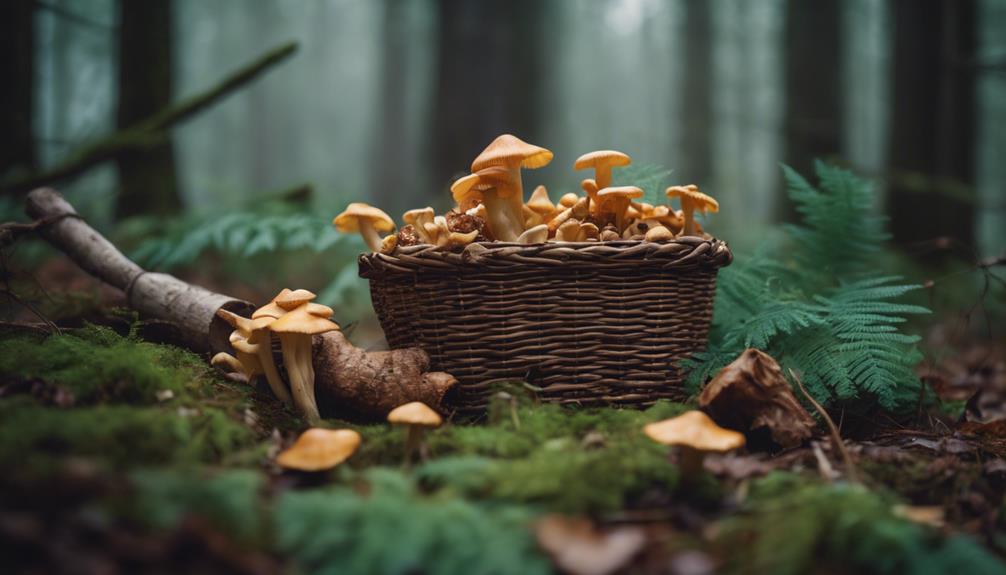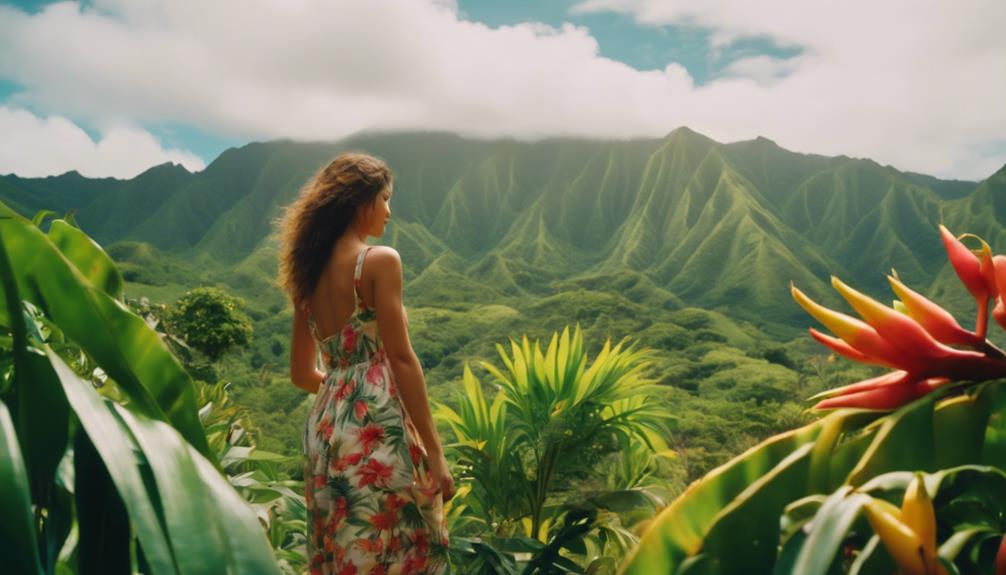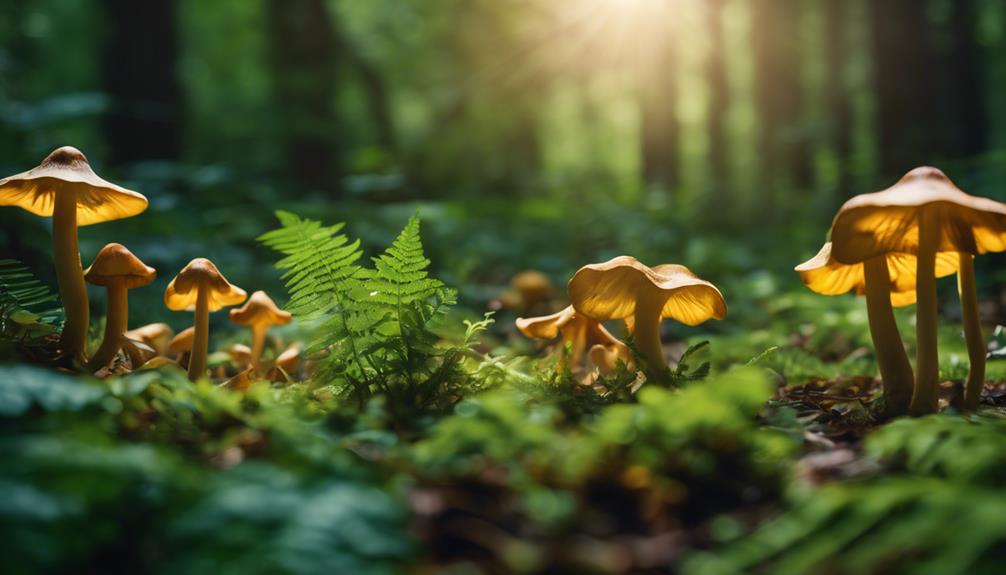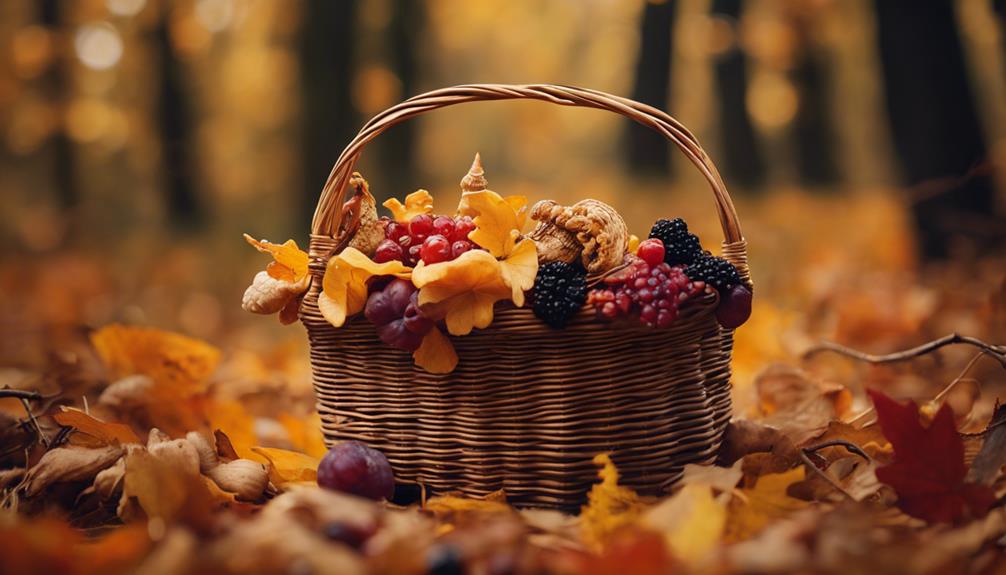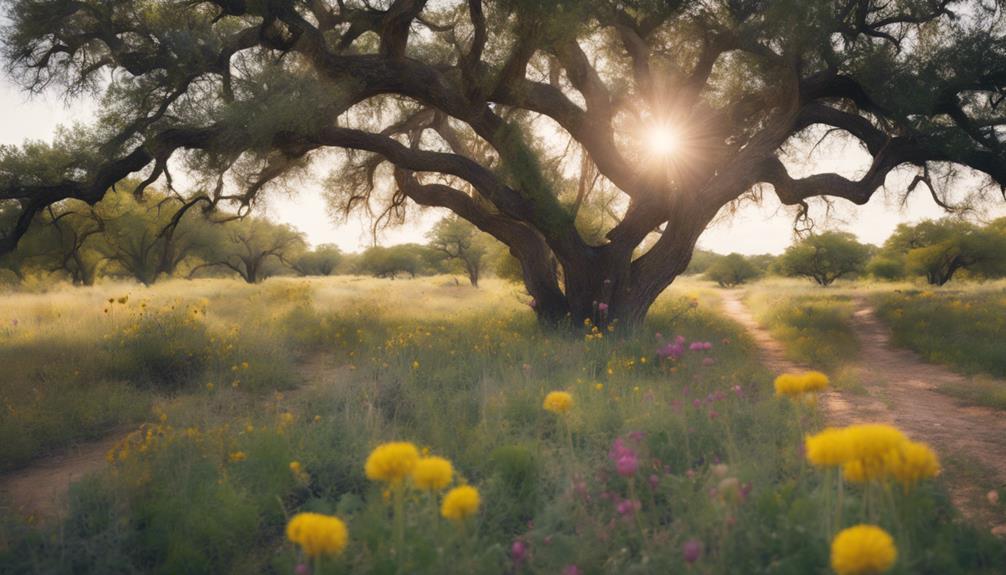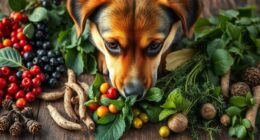Get ready to uncover Oregon's secret treasures – wild edibles waiting to be discovered and devoured! With diverse landscapes from woods to beaches, you'll explore nature's hidden gems under expert guidance. Master foraging techniques, learn plant identification, and practice sustainable foraging to responsibly harvest the freshest ingredients. From seaweed to shellfish, and urban finds to rainforest delights, your culinary adventure begins. Learn how to preserve your bounty and discover recipes that showcase Oregon's wild flavors. Take your first step into the world of Oregon foraging and uncover the secrets that await you.
Key Takeaways
- Explore Oregon's diverse landscapes, including woods, beaches, and rainforests, to find wild edibles with expert guidance.
- Master plant identification skills to distinguish edible plants from toxic look-alikes and ensure safe foraging practices.
- Learn responsible and sustainable foraging techniques to prioritize environmental awareness, personal safety, and ecosystem balance.
- Discover a variety of wild foods in Oregon, including nutritious and delicious options, and learn how to incorporate them into unique recipes.
- Join expert-led foraging adventures, such as seaweed and shellfish foraging in coastal areas, to gain hands-on experience and culinary inspiration.
Discovering Oregon's Wild Edibles
As you explore Oregon's diverse landscapes, you'll discover a hidden world of wild edibles waiting to be found. Join John Kallas on an Oregon foraging adventure, and you'll set off on a culinary journey to explore the state's woods, beaches, and rainforests in search of nature's hidden gems.
From the forest floor to the city streets, Oregon is home to a vast array of wild foods waiting to be gathered and savored.
John Kallas' foraging adventures take you on a wild food journey, where you'll learn to identify and harvest edible plants in their natural habitats. Whether it's urban foraging in the city limits or nature gathering in the wilderness, you'll develop a deeper appreciation for the natural world and the bounty it provides.
Following your foraging trip, indulge in a culinary adventure, where you'll learn to prepare and savor the wild foods you've gathered. With John Kallas as your guide, you'll experience the joy of gathering high-quality food in nature and discover the rich flavors of Oregon's wild edibles.
Foraging Techniques and Safety

As you begin your Oregon foraging adventure, it's crucial to master the art of identifying wild foods, practicing safe foraging habits, and harvesting at the peak of freshness.
You'll need to develop skills in identifying edible plants, avoiding toxic lookalikes, and respecting the natural habitats you forage in.
Wild Food Identification
When you venture into the world of wild food identification, mastering the skills to distinguish edible plants from their toxic look-alikes is essential for a safe and rewarding foraging experience. To develop your foraging skills, you'll need to learn effective techniques for plant identification. This involves recognizing visual cues, scents, and tastes that distinguish wild edible plants from their toxic counterparts.
You can enhance your skills by utilizing guidebooks, attending workshops, and seeking expert guidance. Understanding the seasonality and habitat preferences of wild plants is also vital for successful foraging adventures. By developing your foraging skills, you'll not only enhance your outdoor experiences but also gain a deeper connection to nature.
As you explore the world of wild food identification, remember that accurate plant identification is key to a safe and enjoyable foraging experience.
Safe Foraging Practices
To guarantee a safe and enjoyable foraging experience, you must adopt responsible and sustainable practices that prioritize plant identification, environmental awareness, and personal safety.
Proper foraging techniques are vital to make sure your safety while foraging for wild foods. Here are some essential tips to keep in mind:
| Safety Precautions | Environmental Impact | Foraging Techniques |
|---|---|---|
| Avoid contaminated areas | Minimize environmental impact | Learn from expert guidance |
| Identify plants correctly | Understand seasonal availability | Use guidebooks and workshops |
| Be cautious of allergies | Practice Leave No Trace principles | Positively identify plants |
Remember to always prioritize your safety and the environment when foraging for wild foods. By following these guidelines, you can enjoy a safe and responsible foraging experience. Don't forget to seek expert guidance and learn from workshops and guidebooks to improve your foraging techniques. Happy foraging!
Harvesting at Peak Freshness
You're now ready to take your foraging skills to the next level by mastering the art of harvesting wild foods at their peak freshness. This is where the real fun begins!
To make sure you're getting the best quality and taste out of your finds, it's crucial to learn the right foraging techniques and safety measures. By understanding when and where to forage, you'll be able to identify the freshest, most flavorful wild edibles.
As you venture into the wild, remember to gather plants at their peak ripeness. This will guarantee the best taste and texture. Take the time to prepare your finds correctly, and you'll be rewarded with a culinary experience like no other.
From berries to mushrooms, mastering the art of harvesting at peak freshness will elevate your foraging game. By following these guidelines, you'll be able to enjoy the fruits of your labor, literally!
Edible Plants of the Northwest

In the lush wilderness of the Northwest, you'll discover a vast array of edible plants waiting to be foraged. As you set out on your foraging adventures in Oregon, you'll uncover the region's hidden gems with the guidance of John Kallas, an expert in edible plants of the Northwest region. With his hands-on approach, you'll learn to identify and harvest wild foods, connecting with nature through food.
Here are just a few examples of the nutritious and delicious foods you'll discover:
- Wild mushrooms: Rich in antioxidants and umami flavor, these hidden gems add depth to any dish.
- Wild berries: Bursting with antioxidants and sweet flavor, these juicy treats are perfect for snacking or baking.
- Wild greens: Packed with vitamins and minerals, these leafy wonders add freshness to salads and sandwiches.
John Kallas' foraging adventures offer a unique opportunity to explore the abundance of edible plants available in Oregon. By joining one of his immersive experiences, you'll gain hands-on knowledge and a deeper appreciation for the natural world.
Get ready to uncover the Northwest's best-kept secrets and indulge in the region's most nutritious and delicious foods!
Wild Food Recipes and Ideas

As you explore the world of wild food recipes and ideas, you'll discover a new level of culinary creativity. You'll get to experience unique flavors and nuances that will elevate your cooking to the next level.
From savory Wild Delights to Savor to fresh Finds to Flavor, you'll be inspired to experiment with new recipes and techniques that will make foraging a fun and delicious adventure.
Wild Delights to Savor
While exploring Oregon's lush rainforests and rugged coastlines, uncover a world of wild delights to savor, from seaweed salad to clam chowder, and discover the thrill of cooking with nature's freshest ingredients.
As you set out on your foraging adventures in Oregon, you'll have the opportunity to create unique dishes that showcase the state's wild bounty.
Here are three ways to ignite your culinary creativity:
- Seaweed Salad Extravaganza: Combine freshly harvested seaweed with crunchy veggies and a zesty dressing for a revitalizing coastal treat.
- Clam Chowder Frenzy: Immerse yourself in the world of coastal foraging and harvest clams to create a rich and creamy chowder that's sure to warm your belly and your heart.
- Rainforest Risotto: Forage for wild mushrooms and herbs in Oregon's rainforests and combine them with Arborio rice for a creamy, earthy masterpiece.
Fresh Finds to Flavor
You'll find that the thrill of foraging for wild ingredients only intensifies when you start experimenting with new recipes and flavor combinations that showcase your fresh finds. As you explore the world of wild foods, you'll discover new ways to incorporate your foraged ingredients into meal preparation, revealing unique flavors and culinary creations.
Here are some ideas to get you started:
| Wild Food | Recipe Ideas |
|---|---|
| Wild mushrooms | Creamy soups, savory risottos, and earthy pasta sauces |
| Dandelion greens | Bitter salads, sautéed sides, and tangy smoothies |
| Wild berries | Sweet jams, invigorating sorbets, and fruity tarts |
| Burdock root | Crunchy slaws, savory stir-fries, and flavorful teas |
| Wild garlic | Pungent pestos, aromatic roasts, and flavorful soups |
Foraging for Seaweed and Shellfish

In Oregon's coastal areas, you'll discover a world of flavors and textures by foraging for seaweed and shellfish, guided by expert John Kallas. This unique culinary experience will take you on an adventure through the coastal regions of Oregon, where you'll learn to identify and harvest seaweed and shellfish.
Here are just a few highlights of what you can expect from this foraging adventure:
- Hands-on gathering: Get up close and personal with the ocean's bounty as you gather seaweed and shellfish in their natural habitat.
- Expert guidance: John Kallas will share his expertise on how to identify, harvest, and prepare these wild foods.
- Culinary delight: Enjoy the fruits of your labor as you savor the flavors and textures of your freshly gathered seaweed and shellfish.
This foraging adventure adds a special touch to your wild food experience in Oregon. You'll not only learn about the art of foraging, but you'll also get to enjoy the culinary experience of cooking and enjoying your finds. With expert guides leading the way, you’ll discover the diversity of edible plants and fungi found in Oregon’s lush landscapes. Much like Kansas foraging adventures, this experience highlights the importance of sustainable harvesting and allows participants to reconnect with nature. Whether you’re a novice or experienced forager, the fusion of education and hands-on practice makes this a truly unforgettable journey.
Urban Foraging in Oregon Cities

As you explore Oregon's cities, John Kallas reveals that even the most unexpected urban landscapes hold a secret: a treasure trove of edible plants waiting to be discovered.
You might be surprised to learn that free food is abundant in urban areas, and John's urban foraging workshops will teach you how to identify and utilize these hidden gems.
Oregon cities offer a diverse range of edible plants, from common weeds to fruitful trees, and foragers can find them in parks, alleys, and even sidewalk cracks.
Urban foraging is an accessible and rewarding way to connect with nature, and John's guidance will help you recognize the edible plants hiding in plain sight.
By joining one of his workshops, you'll gain the skills to forage for your own free food in the city. Imagine being able to walk out your door and gather a fresh, healthy meal without spending a dime.
With John Kallas as your guide, you can do just that, and discover the thrill of urban foraging in Oregon's cities.
Wild Food Preservation Methods

Now that you've learned to forage for wild edibles in Oregon's cities, it's time to explore the various wild food preservation methods that will allow you to enjoy your harvest year-round.
When it comes to preserving your foraged finds, you have several options. Here are a few:
- Drying: Perfect for mushrooms, herbs, and fruits, drying removes the water content, making it difficult for bacteria and mold to grow.
- Freezing: Ideal for berries and wild-caught fish, freezing helps preserve the flavor and nutrients of your wild foods.
- Canning: A great way to preserve jams, jellies, and pickled vegetables, canning allows for long-term storage of your wild foods.
In addition to these methods, you can also try canning, pickling, and fermenting to preserve your wild foods.
Fermenting, in particular, is a traditional method that enhances the flavor and nutritional value of wild foods like wild garlic and foraged greens.
Responsible Foraging Practices

When you venture out to forage, remember that responsible practices are essential to maintaining the delicate balance of Oregon's ecosystems. As you search for wild foods, it's important to follow ethical guidelines to protect natural habitats and guarantee the continuation of these resources for future generations.
Obtaining necessary permits and permissions is a necessity before harvesting wild foods. This ensures that you're not over-harvesting and depleting the natural resources. Sustainably harvesting is key – take only what you need, and leave enough for wildlife and future growth. Properly identifying plants is also crucial to avoid accidental ingestion of toxic species.
Remember to respect nature and the environment by leaving no trace and being mindful of ecosystems.
By following responsible foraging practices, you'll be helping to protect natural habitats and preserve wild food sources for years to come. So, be mindful of your actions, and forage with respect and care.
Frequently Asked Questions
What Are the Wild Edibles in Oregon?
You'll find a variety of wild edibles in Oregon, including seaweeds, mushrooms, berries, and edible plants like nettles and fiddleheads, with different regions offering unique finds like sea asparagus, wild onions, and thimbleberries.
How Do You Find Food Sources in the Wild?
You'll learn to identify edible plants by observing their shape, color, and growth habits, then use your senses to confirm edibility, and finally, harvest sustainably to guarantee a continuous food supply.
What Is It Called When You Find Food in the Wild?
When you search for and gather food in nature, it's called foraging! You're on the hunt for edible goodies, identifying plants, fruits, and nuts to savor in a culinary delight, connecting you with the environment in a sustainable way.
What Can I Eat When Foraging?
" Congratulations, you're a modern-day hunter-gatherer! When foraging, you can devour nettles, fiddleheads, berries, seaweed, shellfish, and mushrooms – just don't eat the wrong stuff, or you'll be the one getting devoured!"
Conclusion
As you set out on your Oregon foraging adventure, remember that the wild is a treasure trove waiting to be uncovered, and you're the treasure hunter.
With every foraging trip, you're weaving a tapestry of flavors, textures, and memories.
Don't be afraid to get a little messy, to dig in, and to savor the journey.
For in the world of wild foods, the real treasure lies not in what you find, but in the discovery itself.

